How a Stadium Car-Park Became F1’s Hottest Ticket
Takeaways From the Miami Grand Prix 2025
Thank you for being here. You are receiving this email because you subscribed to Idée Fixe, the newsletter for curious minds. I’m Toni Cowan-Brown, a tech and F1 commentator. I’ve spent the past five years on the floor of way too many F1, FE, and WEC team garages, learning about the business, politics, and tech of motorsports. I hope you’ll stick around.
⏳ Reading time: 9 minutes
I still remember walking into Hard Rock Stadium for the first Miami Grand Prix in 2022 and thinking, “Only in South Florida would someone paint a marina on the asphalt, park real yachts on top, and charge $9,500 for the view.” Yet that Instagram-bait “fake marina” captured everything Liberty Media wanted from its newest U.S. stop: spectacle, social buzz, and a bridge between hardcore petrolheads and the C-suite crowd.
Three seasons later, Miami isn’t just surviving, it's schooling the rest of the calendar on how to turn a race into a tech-infused, sponsor-powered festival. Here’s the inside line and what I’ve noticed since attending the inaugural race in 2022 and attending every year since, because not only is the racing good at the Miami GP, so is the business.
Note: For the 2025 Miami GP, I was a guest of eBay (press trip), I worked with Salesforce and McLaren (brand partnership) and worked with the Miami GP and J.P. Morgan Payments. I was also kindly invited by LEGO to attend their suite on Sunday. So there is a lot to go through, and this is just my experience.
Why Miami? A Deal Seven Years - and Two Zip Codes - in the Making
Miami is the closest thing F1 has to a rolling tech conference-meets-music-festival. Go for the racing, stay for the yacht-on-asphalt selfies - said no one but me. The event also proves that experiential design, rich data capture, and shameless social theatrics can coexist and convert. Miami isn’t just a Grand Prix; it’s a living sandbox for the future of sports monetisation, and they’ve partnered with some of the best in this space.
The inception of the Miami Grand Prix goes back to Liberty Media's acquisition of Formula 1 in January 2017. Recognising the untapped potential of the U.S. market, Liberty Media prioritised establishing races in major American cities, with Miami being a focal point due to its vibrant culture and global appeal. When Liberty Media bought F1 in 2017, Chase Carey called a second U.S. race “priority No. 1.” - F1’s north star, if you will. Miami ticked every box: international gateway, party reputation, and a booming Latin-American fanbase.
The initial plan proposed a downtown street circuit (the Biscayne Boulevard street circuit), but logistical challenges and community opposition led to the selection of a site around Hard Rock Stadium in Miami Gardens. After extensive negotiations and revisions, a ten-year agreement was finalised, and the Miami Grand Prix debuted in May 2022.
Rapid Iteration: From Car Park to Case Study
One thing the South Florida Motorsports (a Dolphins subsidiary) did incredibly well was to pour profits straight back into infrastructure. Here are just a few things they did and reiterated on, and fast:
Digital-Twin Redesign & Full Resurface. Tilke Engineers used LiDAR to model bumps, then laid a new asphalt mix for 2023 that finally offered grip without ruining tyre life. As a reminder, Hermann Tilke is the German engineer and architect behind many of Formula 1’s modern circuits, known for designing over two dozen tracks -including Yas Marina and the Circuit of the Americas - often blending dramatic layouts with strict FIA safety standards. Tilke did not design the original layout of the Miami Grand Prix circuit. However, Tilke Engineers & Architects were later brought in to oversee significant upgrades to the circuit.
World-First Stadium Paddock. The Paddock ‘team village’ now sits on the NFL field, giving VIPs air-conditioned access inside the stadium - a genius idea no other promoter can copy without a $350-million football arena. And I have to say, the Miami Paddock is one of the nicest and most practical ones I’ve ever spent time in. I also love the friendly team hospitality layout, where teams face each other rather than being in one long line.
Campus Pass & 56k Extra Seats. A GA product lets fans wander between concerts, activation zones, and elevated track views; grandstand capacity jumped 15 %. Miami’s first two races injected $798 million into the region, numbers that helped it capture F1’s “Promoter of the Year” award in 2024. For brands, the ROI calculation is simple: the race delivers Super-Bowl-level hospitality without the one-day shelf life.
Year One: Glitz, Grip and Growing Pains
The inaugural race in 2022 was met with both enthusiasm and criticism - some valid and some born out of fear of ‘anything new and different’. While the event attracted significant attention, drivers voiced concerns about the track's surface, describing it as "very slippery" and "awful," leading to safety issues and calls for resurfacing, forcing overnight patch jobs and a full resurfacing the next winter.
Additionally, some fans felt that the event prioritised spectacle over racing quality, highlighted by features like the "fake marina." Organisers took this feedback seriously, implementing improvements in subsequent years to enhance the racing experience and address safety concerns. The organisers also have a sense of humour and turned the fake marina meme into a premium package with real water in 2023 - the $67,000 “Sunset Cabana.” Ridiculous? Yes. Profitable? Absolutely.
Despite this, it sold out in minutes and tickets vanished fast, confirming Liberty’s Drive-to-Survive-fueled hype machine. Inaugural viewership hit a record U.S. TV audience with 2.6 million; by 2024, Miami peaked at 3.6 million - still the biggest live F1 audience in U.S. history. This year, the race averaged 2.17 million viewers on ABC, marking a 29% decrease from the previous year's record of 3.07 million viewers. This decline can be attributed to the absence of a strong lead-in program, such as the NBA playoff Game 7 that preceded the 2024 broadcast. That statistic right there matters to every sponsor flirting with global reach.
Sponsor Wonderland
During the past five years, I’ve attended a plethora of races; no other weekend is as busy and as valuable to me from a financial and networking perspective, so I can only imagine it’s the same for the brands and partners. This year was no exception, almost every night there were half a dozen dinners, drinks, screenings and parties to choose from. During the day - both on and off track - there were events, roundtables, salon-style lunches, conferences… to attend.
From a commercial standpoint, the Miami Grand Prix has been a resounding success. The 2024 event attracted nearly 300,000 attendees over the race weekend, and in 2025 that number was matched yet again with a total of 275,480 spectators over the three-day weekend, generating a substantial economic impact for the region. The race has become a hotspot for brand activations, with companies like American Express, Jack Daniel's, Tag Heuer, Liquidiv, Tommy Hilfiger and HUGO leveraging the event to engage with diverse audiences through innovative marketing strategies. This year was no different. Vanity Fair x F1 Academy, Cadillac ‘announcement’ party, WhatsApp x Mercedes screening of The Seat (now on Netflix), LEGO and Tag Heuer went all out.
Efforts have also been made to appeal to broader demographics, including targeting female fans and the travel and wellness markets, reflecting a more inclusive approach to fan engagement.


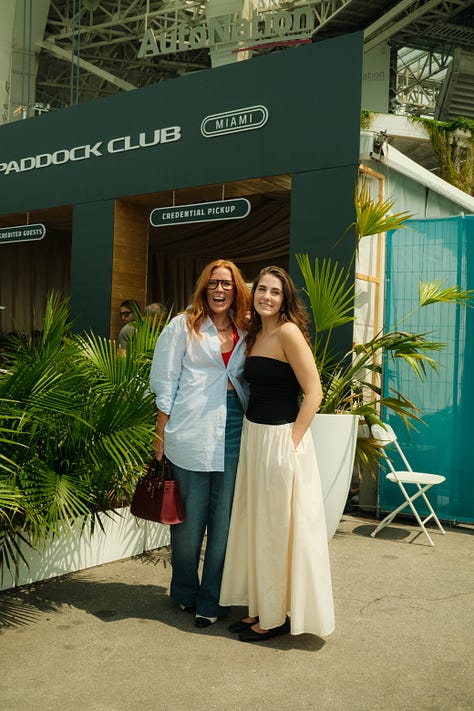
Governance: What Miami Teaches Future Promoters
Every year since the inaugural Miami race (2022), the number of fans in attendance has grown - from 243k in 2022, to 270k in 2023, to close to 300k. The Miami Grand Prix exemplifies the complexities of organising a Formula 1 race, highlighting the collaborative roles of promoters, Formula One Management (FOM), and Liberty Media. Promoters are responsible for the logistical and financial aspects of the event, while FOM oversees the commercial rights and global strategy.
Liberty Media's vision has been instrumental in expanding F1's footprint in the U.S., with Miami serving as a case study in navigating regulatory hurdles, community relations, and brand positioning. Vegas has the glitz, but Miami has the reps. After four flawless-ish editions (nothing is ever perfect), South Florida Motorsports (SFM) has turned Hard Rock Stadium into a living A/B test lab for F1 events. Liberty Media, now wearing the promoter hat in Las Vegas for the first time in series history, would be silly not to borrow a few pages.
Own the Venue, Control the Narrative. The vertical model (stadium, parking, team village, concessions) sidesteps the municipal red tape choking downtown street circuits - see Chicago’s NASCAR headaches for contrast.
Liberty just posted a $1.5 billion year-one impact in Vegas, but hotel unions and ride-share drivers still gripe about overnight closures. I think there is an opportunity here for Formula 1 to copy Miami’s playbook: publish exact tax receipts (Vegas schools banked $22 m) and tie a slice of ticket revenue to a local cause before residents demand it. In other words, own the community story, not just the land.
Design for Social, Fix Racing Later. Miami led with FOMO-driven aesthetics; performance tweaks followed. Purists hate it, but sponsors love the buzz.
Iterate Like a Startup. Hard Rock’s “v2” track, campus pass, and paddock shift happened within 12 months - unthinkable at heritage circuits tied to government budgets. Miami treats each race like a software update: new grandstands, revamped traffic flow, 15 % more concessions, repeat.
Sprint = Content Multiplier. Fans may have many feelings around the Sprint weekends in F1, but they certainly guarantee competitive sessions Friday-Sunday - creating three monetisable windows instead of one, which is a huge asset for the promoter and a draw for sponsors. This also included the whole F1 Academy programming.
As of 2025, the Miami Grand Prix has solidified its status as a premier event on the F1 calendar. Continuous improvements in infrastructure and fan experience have addressed early criticisms, and the race now enjoys high attendance and viewership. They’ve demonstrated that it’s important to not just listen but act on what the fans are ‘shouting’ about. The Miami Grand Prix stands as a testament to Formula 1's successful integration into the American sports landscape, balancing entertainment with competitive racing. And no one knows entertainment better than the Miami Dolphins.
This blend of entertainment and motorsports might not appeal to everyone, but there is no doubt that it’s a packed weekend with a wide variety of options at many different price points - in other words, there is something for almost everyone.

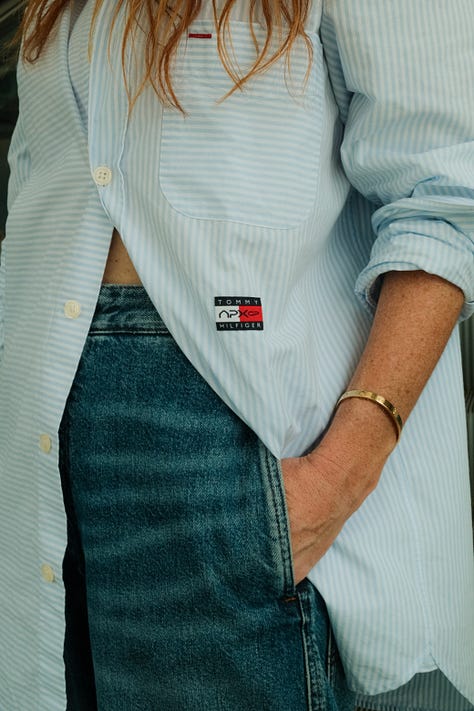

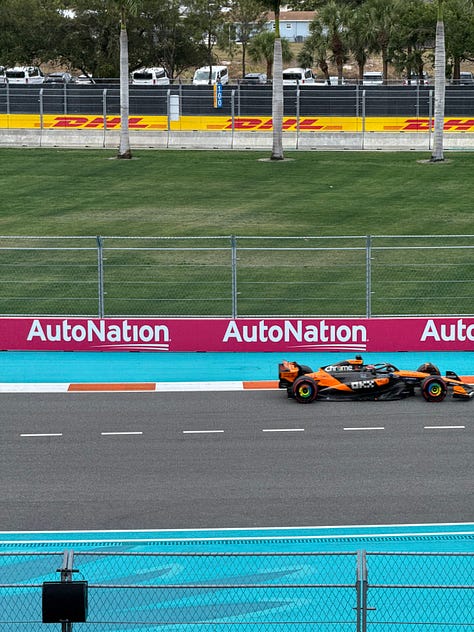
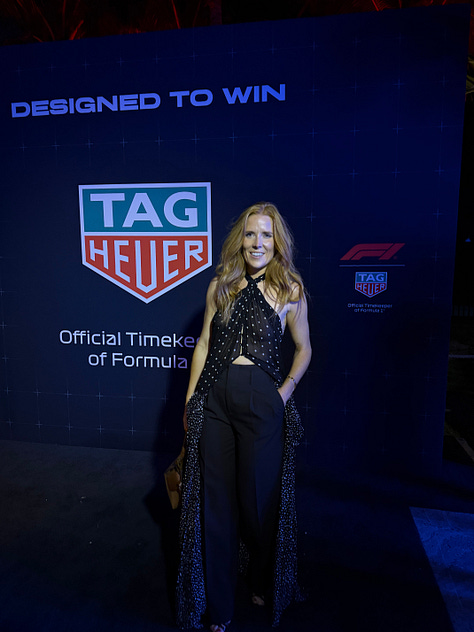
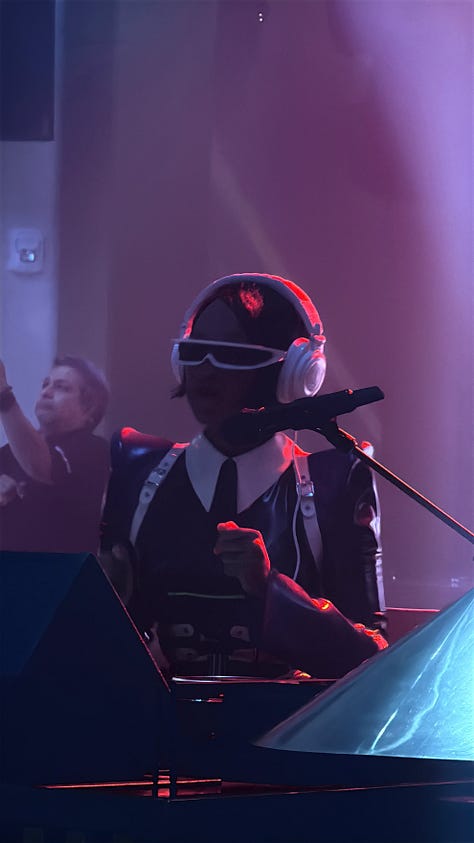
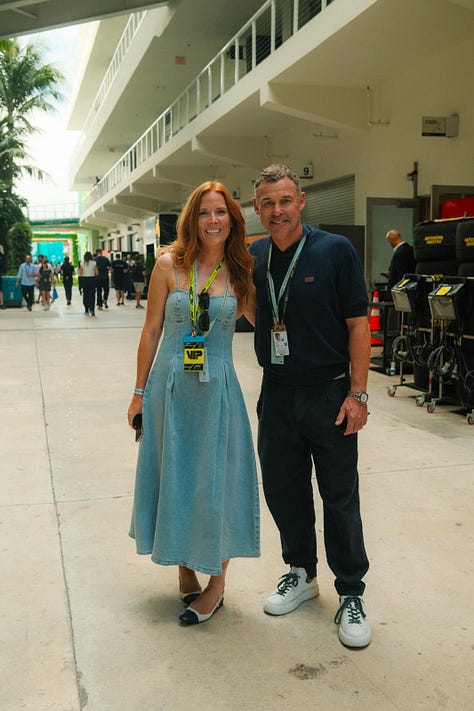
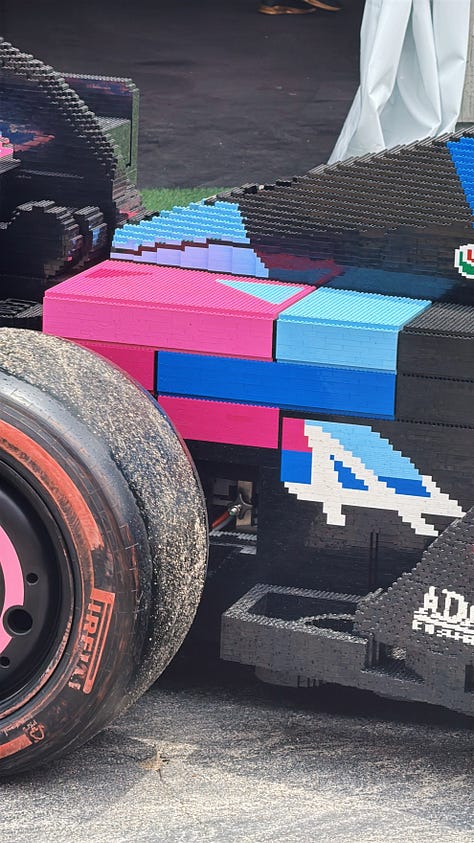

🔗 The Sportiest Met Gala Ever | Sports Verse
The Met Gala happened last night. I hope that wasn’t news to you. But if it was, it means you don’t have social media, live a quiet and peaceful life, and probably got a great night’s sleep. As my friend Ashtyn Butuso and I discussed in OffBall’s Monday newsletter, this was always going to be the sportiest Met Gala ever. Read here.
🔗 The Seat | Netflix
The Seat, a new doc on Netflix, by WhatsApp and Mercedes—which starts streaming today—takes you behind the scenes as the iconic racing team says goodbye to its once legendary driver, Lewis Hamilton, and ushers in a new era with Kimi Antonelli.
🔗 Inside the Wild Rise of the Savannah Bananas: Baseball’s New Billion-Dollar Brand | Huddle Up
Today's newsletter breaks down the Savannah Bananas 40-city tour, including the financial agreement for the team's sold-out game at Clemson and why the future of Banana Ball could be even bigger. Read here.






